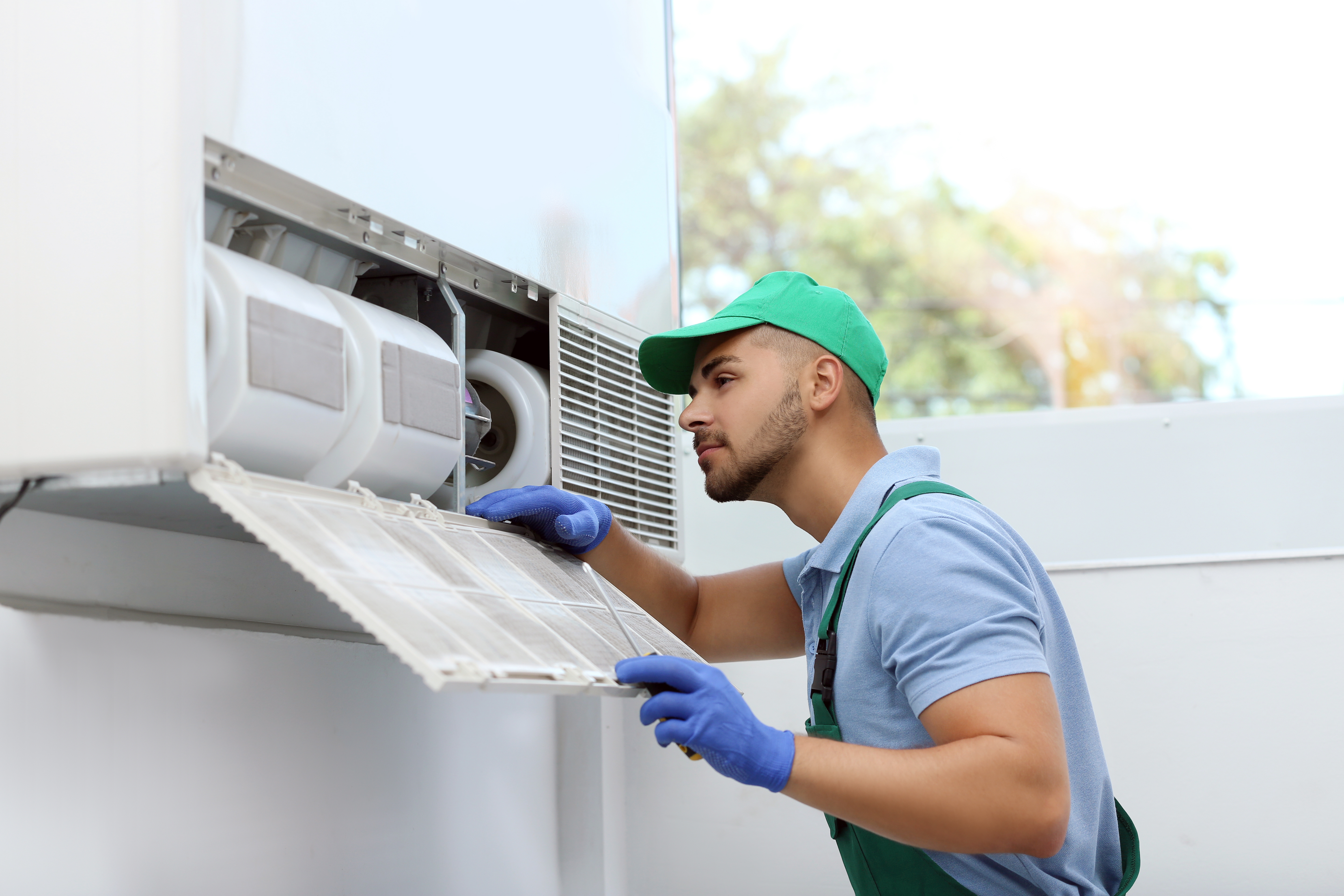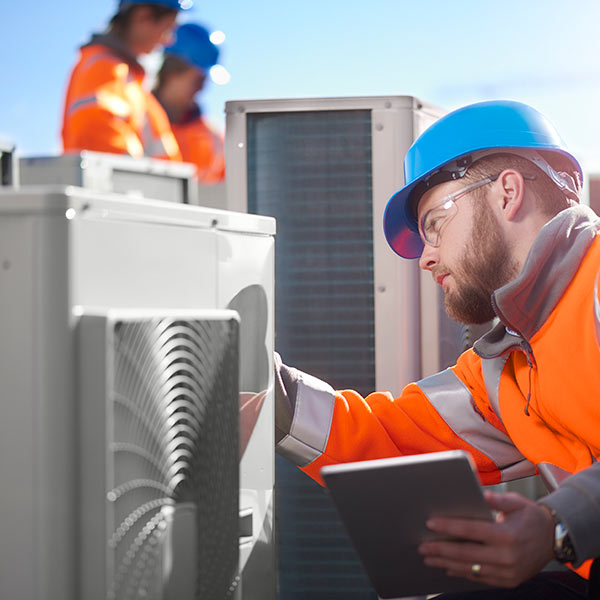Exactly How a Heatpump and Furnace Interact to Enhance Your Home's Heating Performance
Comprehending just how a heatpump and furnace interact is necessary for property owners seeking reliable home heating remedies. Each system has its toughness, supplying a well balanced technique to home comfort. The heatpump masters moderate temperature levels, while the heater provides quick warmth during severe cold. This synergy not just minimizes energy costs but additionally improves the life-span of both home appliances. What variables influence this collaboration, and just how can house owners maximize their advantages?
Understanding Warm Pumps: How They Work
Several people might be strange with their inner functions, warmth pumps play an important function in modern-day heating systems. These gadgets run by moving heat from one location to another, using the concepts of thermodynamics. In colder months, a warm pump essences warmth from the outdoors air, ground, or water, and transfers it inside your home to warm the home. On the other hand, throughout warmer months, it can reverse the procedure, functioning as an air conditioning unit by removing warm from inside to the outside.Heat pumps include an evaporator, condenser, compressor, and expansion shutoff. The cooling agent within the system soaks up warmth as it vaporizes at low temperatures and pressures. The compressor after that boosts the pressure and temperature of the refrigerant, allowing it to release heat as it condenses. This efficient process can greatly decrease energy consumption compared to typical home heating approaches, making warmth pumps a lasting choice for climate control in homes.
The Role of Furnaces in Home Heating
Heaters play an important function in home heating by offering a reputable source of warmth throughout the colder months. They operate by producing warm via combustion or electric resistance, distributing it throughout the home by means of air ducts or glowing systems. The performance of a heater is frequently determined by its Annual Fuel Use Effectiveness (AFUE) ranking, which shows just how effectively the unit converts gas right into heat.Furnaces can use various energy resources, consisting of natural gas, power, lp, or oil, enabling home owners to choose the most suitable alternative for their needs. Unlike warmth pumps, which may have a hard time in extreme chilly, furnaces preserve regular performance, ensuring that interior temperature levels stay comfortable no matter of outdoor problems. Additionally, modern-day heating systems usually come outfitted with advanced technology, such as smart thermostats and variable-speed blowers, improving their efficiency and responsiveness. This adaptability makes furnaces a critical component in all-inclusive home heating approaches.

Benefits of Making Use Of Both Equipments With Each Other
Integrating the staminas of both heating systems and heatpump can bring about an extra reliable and reliable home heating option. Using both systems allows property owners to benefit from the heatpump's power effectiveness during milder temperatures while counting on the heating system for more severe cold problems. This dual approach can greatly lower energy costs, as heat pumps eat less electrical power than traditional home heating methods when temperature levels are moderate.Additionally, utilizing both systems with each other can improve comfort degrees in the home. Heatpump can give constant, also heating, while heaters can swiftly raise ambient temperatures when required. The assimilation of both systems can prolong the life-span of equipment by minimizing wear and tear on each unit, as they share the workload. Inevitably, house owners can delight in a well balanced, economical heating remedy that adjusts effortlessly to differing weather condition problems, guaranteeing a cozy and welcoming home throughout the cold weather.
Just How Heat Pumps and Furnaces Enhance Each Various Other
When property owners incorporate heatpump and furnaces, they create a corresponding home heating system that optimizes effectiveness and convenience. Warmth pumps run by moving heat from the outside air or ground, making them highly efficient in moderate climates. They succeed during milder temperatures, providing affordable heating. On the other hand, heating systems produce warm with burning or electric resistance, delivering strong, immediate warmth throughout severe cold conditions.The combination of these two systems permits vibrant changes based upon temperature fluctuations. During warmer months or milder winter days, the warmth pump can take the lead, conserving energy and reducing costs. As temperature levels decline, the heater can flawlessly involve, making certain constant warmth throughout the home. This harmony not just enhances energy use yet additionally improves the life expectancy of both systems, as each unit runs within its ideal efficiency variety. Together, they create a balanced environment that adjusts to varying environment needs.
Enhancing Efficiency: Tips for Homeowners
Home owners can improve their heating performance with several functional techniques. Developing a routine maintenance routine, integrating clever thermostat innovation, and implementing reliable insulation and sealing options are essential actions. These steps not just improve convenience but additionally decrease power costs.
Normal Maintenance Schedule
To assure optimal heating effectiveness, establishing a normal maintenance timetable is crucial for any type of home. Property owners need to prioritize routine evaluations of both heat pumps and heaters to ascertain peak performance. This consists of transforming air filters every one to three months, as clogged up filters can significantly lower efficiency. Furthermore, organizing professional maintenance a minimum of yearly allows technicians to identify and resolve possible concerns before they intensify. Home owners should also clean up the warmth pump's exterior unit to stop debris accumulation that can prevent air movement. By adhering to a regular maintenance routine, house owners not just boost their furnace' performance but likewise prolong their life expectancy, leading to greater comfort and reduced energy costs throughout the colder months.
Smart Thermostat Assimilation
Integrating a clever thermostat right into a home furnace can significantly improve energy efficiency, specifically as it enables specific control over temperature level settings. These gadgets can find out the property owner's routine and preferences, automatically adjusting the temperature level to enhance convenience while lessening power use. For instance, they can decrease home heating throughout times he has a good point when the home is unoccupied, lowering unnecessary intake. Numerous clever thermostats also give real-time energy use data, making it possible for home owners to make educated choices about their home heating practices. In addition, remote access using mobile phone applications allows customers to adjust settings from anywhere, guaranteeing the home is cozy upon return. In general, clever thermostat combination not just improves convenience but substantially contributes to power cost savings and effectiveness.
Insulation and Securing Solutions
Smart thermostats play a vital role in energy performance, but their efficiency can be greatly improved by appropriate insulation and securing services. House owners should focus visite site on protecting attic rooms, walls, and floors to reduce warmth loss. Top notch insulation products, such as spray foam or fiberglass, can significantly improve thermal resistance. In addition, securing gaps around ducts, doors, and windows prevents cool air seepage and heat retreat. Weatherstripping and caulking work approaches for resolving these leaks - ductless mini splits. Regular examinations for air leaks, along with the use of blower door tests, can assist determine issue areas. By investing in insulation and sealing, property owners can optimize the performance of their heating unit, ultimately resulting in decreased energy consumption and lower utility costs
Typical Myths About Warm Pumps and Furnaces
What false impressions border warm pumps and furnaces? Numerous individuals mistakenly think that warmth pumps are inefficient in chillier climates. In fact, modern-day heat pumps are developed to operate successfully even in low temperatures, giving reliable home heating throughout winter season. Another usual myth is that furnaces are constantly a lot more efficient than heatpump. This depends on the particular energy sources and performance scores of the devices in concern. Some may additionally believe that making use of both systems all at once is unnecessary, however in truth, this combination can maximize heating performance, especially throughout extreme climate conditions. Furthermore, individuals frequently think that heat pumps need constant upkeep, when in reality, they have comparable maintenance needs to traditional home heating systems. By debunking these misconceptions, home owners can make more enlightened decisions regarding their home heating options, ultimately bring about improved comfort and power effectiveness in their homes.
Maintenance Considerations for Combined Solutions

Regularly Asked Inquiries
Can Warm Pumps Job Effectively in Incredibly Cold Climates?
Warmth pumps can have a hard time in very cool climates because of minimized performance and heat extraction constraints. Innovations in technology have led to designs created for far better efficiency in such problems, boosting their viability in severe atmospheres.
For How Long Do Warmth Pumps and Furnaces Typically Last?
Heatpump generally last 15 to twenty years, while heating systems have a life expectancy of 15 to thirty years. Routine upkeep can prolong their durability, making sure reliable procedure and decreasing the need for premature substitutes.

What Is the Typical Cost of Putting Up Both Solutions?
The average price of setting up both a heatpump and a heater commonly ranges in between $5,000 to $10,000 - ductless mini splits. Elements affecting this price include system size, installation intricacy, and local labor prices
Exist Tax Motivations for Making Use Of Energy-Efficient Home Heating Solutions?
Many house owners make inquiries regarding tax obligation motivations for energy-efficient heater. Different government and state programs frequently use credit scores or rebates, urging the adoption of sustainable technologies to decrease power usage and advertise ecological responsibility.
How Do I Choose the Right Size Heatpump and Heating System?
Picking the appropriate dimension heat pump and furnace involves determining the home's square video, considering insulation quality, and assessing regional climate. Consulting a professional can guarantee perfect system i loved this efficiency and power performance based upon details demands. furnace replacement. Comprehending how a warmth pump and heating system work with each other is necessary for property owners seeking reliable heating remedies. In cooler months, a warm pump essences warm from the outside air, ground, or water, and transfers it indoors to warm up the living area. When house owners integrate heat pumps and heaters, they produce a complementary home heating system that maximizes efficiency and convenience. Warm pumps operate by moving warmth from the outdoors air or ground, making them extremely efficient in modest environments. Warm pumps can struggle in incredibly cool environments due to decreased performance and warm extraction limitations